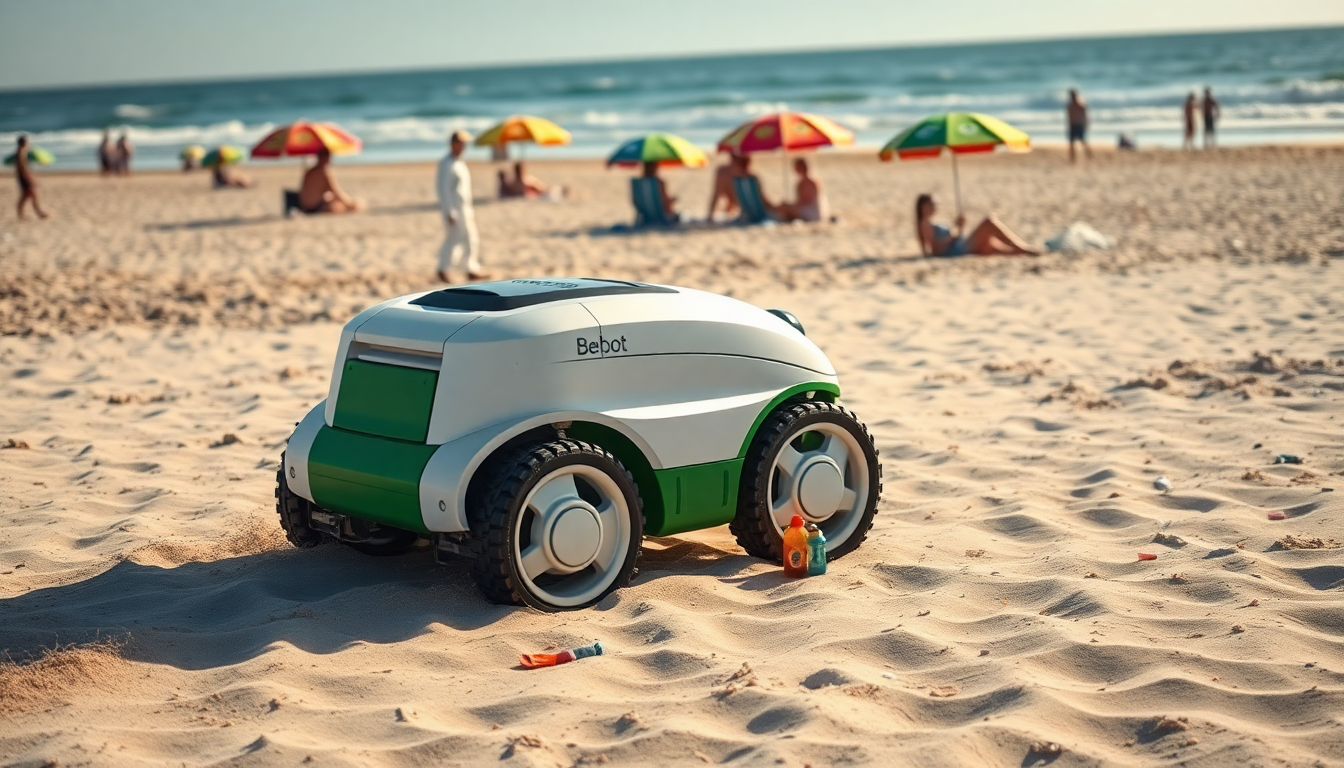Table of Contents
This summer, beach-goers in Ontario might spot something a bit unusual on the sandy shores—a Zamboni-like robot named BeBot, working hard to keep the coast clean. Intrigued? This innovative machine is designed to tackle plastic and other debris, representing a significant stride towards environmental sustainability and awareness.
Powered entirely by electricity and operated remotely, BeBot uses sand-sifting technology to collect various types of litter, from plastic to glass, metal, and paper.
Understanding the Technology Behind BeBot
So, how does it all work? According to Melissa DeYoung, CEO of Pollution Probe—an environmental organization that teamed up with the Ontario Ministry of the Environment, Conservation and Parks—BeBot is engineered to intercept larger pieces of debris before they can enter the water.
Why is this important? Because tackling plastic waste before it breaks down into microplastics is crucial for protecting aquatic ecosystems and the wildlife that depends on them.
“We will never eliminate all plastic from the environment, but we can gather valuable data on the types of waste we encounter,” DeYoung points out.
This data is vital for understanding where the litter comes from, which is essential for developing effective long-term strategies to combat pollution.
Impressively, BeBot can clean up to **3,000 square meters** per hour, collecting the equivalent weight of **19 bowling balls** in plastic debris during a single operation.
With its solar panel, it can run for up to **eight hours** on a single charge, moving at a speed just below **three kilometers per hour**—perfect for thorough cleaning without disturbing beachgoers.
Locations and Impact of BeBot’s Deployment
BeBot kicked off its cleaning operations at Lake Simcoe’s Sibbald Point Provincial Park, with plans to expand its reach to locations like Inverhuron Provincial Park and Long Point Provincial Park on Lake Huron. And that’s not all; by the end of summer, it will also be making its rounds at Sandbanks and Darlington Provincial Parks along Lake Ontario.
But BeBot isn’t just about cleaning up; it also serves an educational purpose. DeYoung highlights how the robot’s presence sparks conversations about plastic pollution and waste reduction. “People often underestimate the issue because they don’t see plastic in the water. Our presence on the beach invites them to engage in necessary conversations about sustainable practices,” she explains. Isn’t it fascinating how technology can drive awareness?
Pollution Probe launched its **Great Lakes Plastic Cleanup** initiative back in 2020 to tackle the growing issue of plastic waste in the region. The introduction of BeBot is a continuation of these efforts, showcasing a strong commitment to environmental stewardship and community involvement.
Government Support and Future Prospects
The Ontario government has also recognized the importance of addressing plastic pollution, providing nearly **$1 million** to Pollution Probe since 2021 to support their initiatives around the Great Lakes. With over **160 different plastic-capturing technologies** already in operation, the arrival of BeBot marks an exciting leap forward in the fight against environmental degradation.
Looking ahead, the success of BeBot could inspire similar projects in other regions, highlighting the significance of innovative solutions in tackling environmental challenges. The collaboration between government bodies and organizations like Pollution Probe illustrates a collective effort to protect our natural resources for future generations. Who knows? BeBot might just be the start of a cleaner, greener future!





